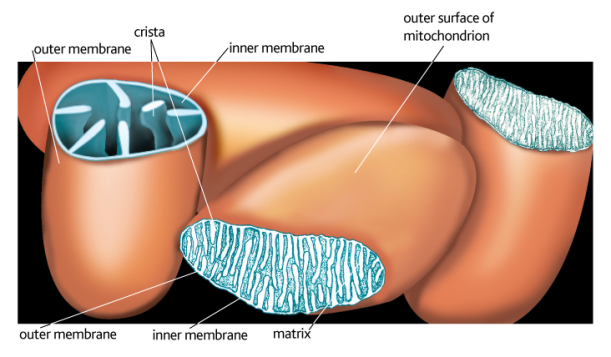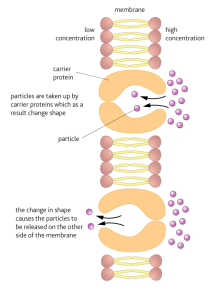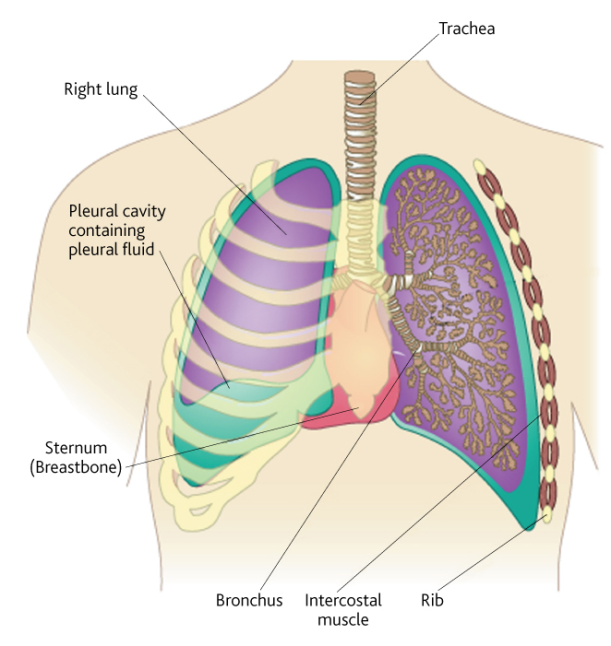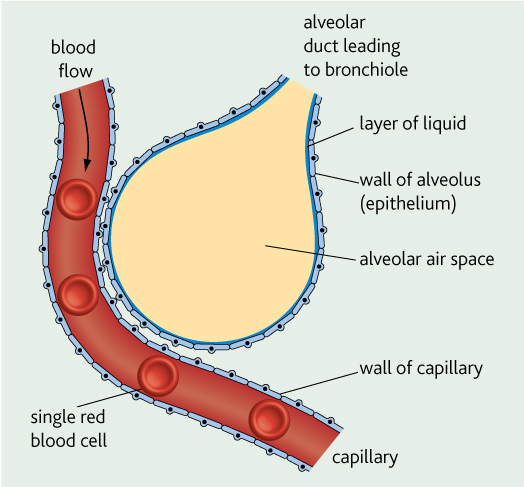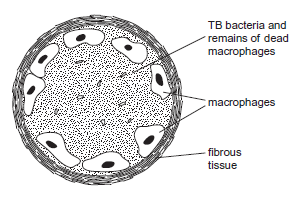Cystic fibrosis is a disorder effecting plasma membranes. It is caused by a faulty gene.
One of the proteins involved in active transport across membranes is the CFTR protein, which is made by the CFTR gene. It transports chloride ions out of the cell.
Normal
In the respiratory tract, chloride ions are actively transported out of the cells into the mucus which lines the epithelium (remember mucus is produced by the goblet cells). This lowers the water potential of the mucus. This means water moves by osmosis from the cell into the mucus, making the mucus sticky enough to trap dirt and bacteria, but thin enough so it can be moved upwards by the cilia, stopping bacteria settling in the lungs.
Cystic fibrosis
People with CF have a faulty CFTR protein – its tertiary structure is different. Chloride ions cannot be transported out into the mucus. This means the water potential of the mucus increases and water leaves the mucus. This makes it very sticky and thick making it hard for the cilia to move it. This means bacteria settle in the lungs and can cause infections. They develop:
- coughs and wheezing as they try to force the mucus out.
- shortness of breath as mucus blocks bronchioles
- bacteria grow in a layer called a biofilm making it hard for antibiotics and white blood cells to kill them. Lots of phagocytes move to the lungs to destroy them, but end up damaging the lung tissue instead. This lowers the surface area available for gas exchange.
- thick mucus blocks the pancreatic duct
- thick mucus blocks the ducts carrying the gametes in the reproductive tracts – can lead to infertility.
Treating cystic fibrosis
- Chest physiotherapy to help remove mucus from lungs
- Regular exercise and keeping fit is helpful
- Antibiotics to help prevent infections
- Drugs which dilate the airways and thins the mucus
- Take a high fat, protein and carb diet as they don’t absorb their food properly as well as enzyme capsules to help with digestion due to blocked pancreatic duct.
- Gene therapy – putting normal copy of CFTR gene into lung cells
- Lung transplant

